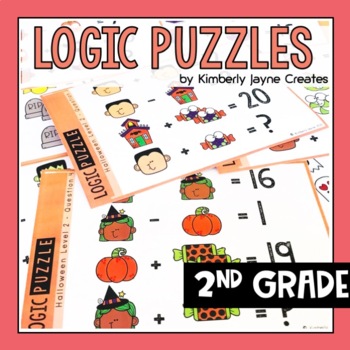Halloween Math Activities Logic Puzzles 2nd Grade Enrichment
- PDF
- Easel Activity
Also included in
- 48 Halloween themed logic puzzles that engage students to develop fact fluency and problem solving using critical thinking skills. These problems are great for morning math routines, warm-ups, plenaries and centres. Perfect to use as enrichment tasks for high ability and gifted and talented studentsPrice $12.00Original Price $15.00Save $3.00
Description
8 Halloween themed logic puzzles that engage students to develop fact fluency and problem solving using critical thinking skills. Great for increasing mental math abilities. Level 2 includes Addition and Subtraction problems to 30, including doubles. It would suit approximately 2nd grade / Year 2, but could be below or above depending on student ability.
How Can it be Used?
Students can complete tasks in the classroom or from home for distance learning. They can also be used for early finishers, warm-ups, plenaries, independent work or extension work. I use these in Math Extension classes for Gifted and Talented / High Ability students.
What Will I Receive?
- 8 Logic Puzzles (Full size for displaying on IWB)
- Color Task cards
- Black and White Task Cards
- Answer Recording Sheet
- Answer Key
- Easel Activity
Let's Connect
You might also like:
Math Logic Puzzles Problems Level 2 Pack 1
Math Logic Puzzles Level 1 to Level 6 Pack 1 BUNDLE
♥♥♥ Earn TPT Credits when you leave feedback ♥♥♥







